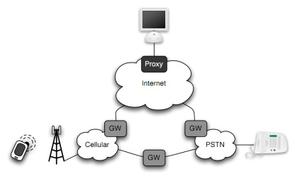Telephone “fingerprints”Company develops telephone line “fingerprint” detector
Researchers at Pindrop, a new security company, have developed technology that can read telephone line “fingerprints” to prevent fraud and identify a caller

Pindrop technologymakes use of the acoustic fingerprints of each step of the calling process // Source: 52solution.com
Researchers at Pindrop, a new security company, have developed technology that can read telephone line “fingerprints” to prevent fraud and identify a caller.
Whenever a phone call is placed anywhere in the world whether it is by cell phone, land line, or Skype, the electrical signals must travel through a series of different networks. Each of these networks results in a unique sound that the company calls “line noise.”
By analyzing the differences in “line noise,” Pindrop’s technology can determine where a caller is dialing from and what device they are using.
“The telephone network has been around for a long time, so there are very different fingerprints for different regions,” explained Mustaque Ahamad, Pindrop’s chief scientist and cofounder and a professor at the Georgia Institute of Technology.
For instance the line noise produced by the older telephone infrastructure of Western Europe is noticeably distinct from that in Africa. Furthermore service providers around the world rely on different audio processing software, which results in unique line noise as well. Thanks to these minor differences, line noise can be clearly detected and identified on calls placed to recipients less than 100 miles away.
“We can identify whether a person is using a landline or cell phone, or when a call supposed to come from a mobile in Atlanta comes from a landline in Nigeria,” said Vijay Balasubramaniyan, the CEO and cofounder of Pindrop.
The company is currently working with several major banks to help secure telephone-transactions and prevent fraud. After stealing sensitive personal details, criminals commonly spoof an individual’s caller ID when calling into the bank to fool security measures. But now with Pindrop’s technology in place, banks can automatically process where a call is coming from and flag it for signs of fraud.
Ahamad and Balasubramaniyan say it is nearly impossible to replicate line noise and fool their system as many elements of line noise remain the same, even on different phones. Essentially the only way to alter a caller’s line noise profile would be to have telephone service provider change their infrastructure, and even then it is unlikely that a spoofed call would match up to their victim’s line noise profile exactly.
